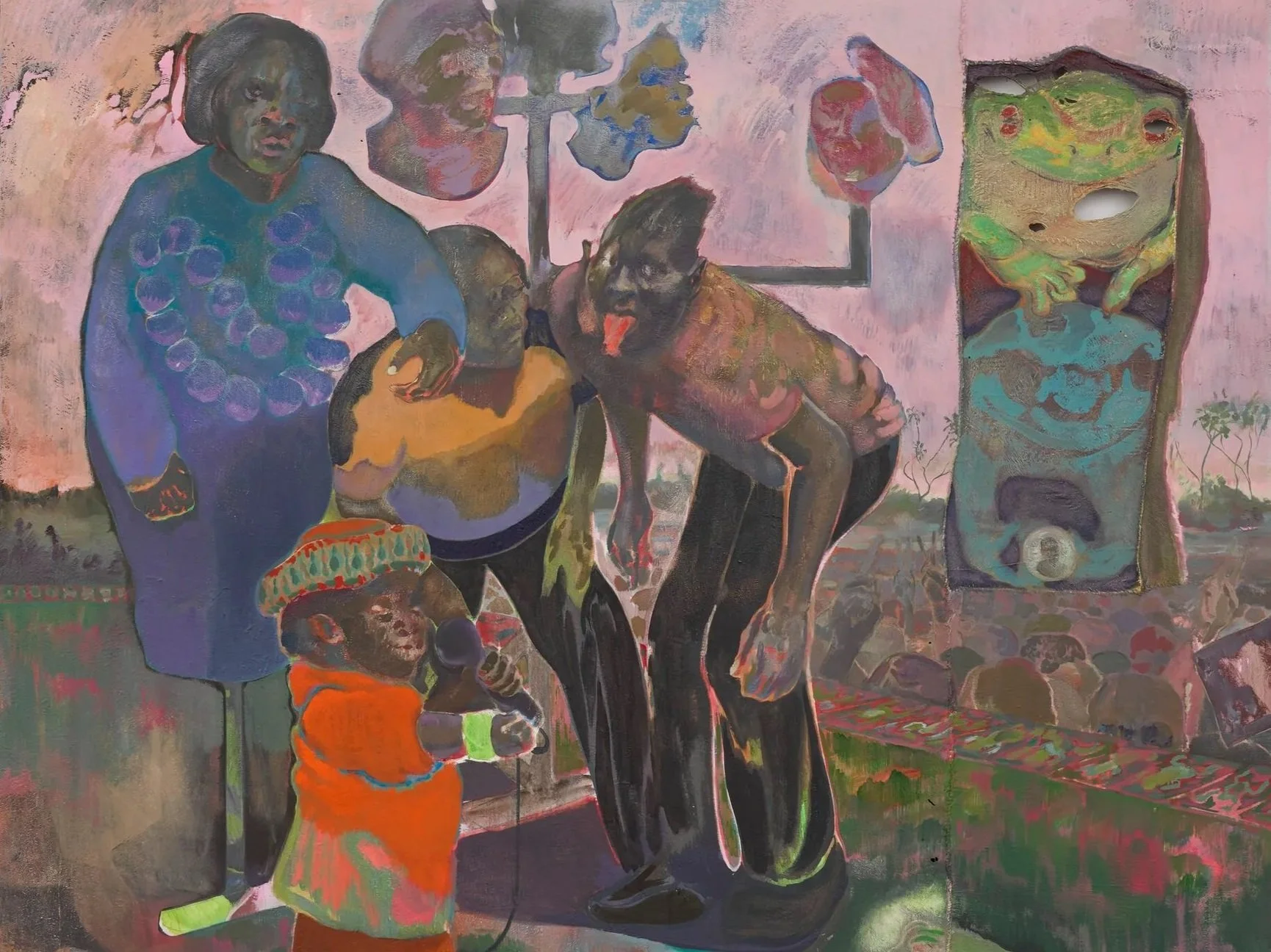Michael Armitage (b. 1984, Nairobi, Kenya)
The Promise of Change
2018, oil on lubugo bark cloth, 220 x 240 cm.
Photo by White Cube. Courtesy of the artist and White Cube and Michael Armitage. ©Michael Armitage.
A toddler, dressed in royal robes, is addressing an audience on a stage, microphone in hand. He is surrounded by three adults, one of whom is sticking out a long, bright red tongue. On the stage there is also a frog and two more peek out of a fault in the lubugo cloth. The scene, to put it mildly, is weird! What is a toddler doing on a stage? Why are there frogs?
READ MORE ABOUT THE BACKGROUND…
Armitage attended a political rally in the run-up to the 2017 Kenyan national elections. The vibes were bizarre, with supporters dressed up as clowns and superheroes, and with politicians making ridiculous promises. He researched other rallies in newspapers and social media and came across more fantastic scenes. Armitage wanted to create political art, but without the “politics” Rather, he was interested in the people who supported political parties. What did they think about their leaders?
Inspired by George Orwell’s use of animals as stand-ins for political figures in the novel Animal Farm, and by Kenya’s own oral histories involving animals, Armitage decided to use the frog to represent political leaders (but not specific ones). The frog is a slimy creature, but the supporters are entranced by it. Outsiders wouldn’t understand why they are following something as gross as a frog.
Armitage compared the scenes he witnessed to the absurd nightmares of Goya’s work, such as the Disparates and Caprichos series. The politicians at the rally make absurd promises, which very rarely come true.

